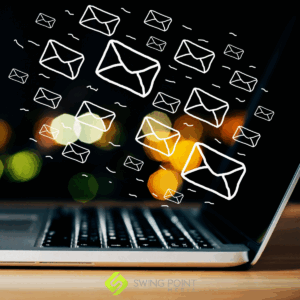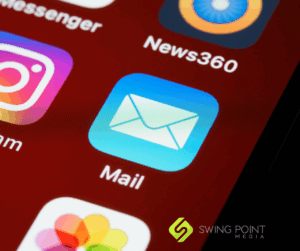In the age of TikTok trends and social media algorithms, it might surprise you to hear that email marketing remains the undisputed champion of ROI. But for small and local businesses, it’s not just relevant—it’s essential. Why? Because email gives you a direct line to your audience, allows for easy automation, and drives conversions like no other tool.
According to a recent study, email marketing yields a staggering $36 return for every $1 spent. That’s not hype—it’s data-backed reality. Whether you’re a boutique shop, a neighborhood café, or a local service provider, the right email strategy can bring your brand directly into the hands (and hearts) of your customers.
Here’s how to make it work for your business.
Segment Your Audience
If you’re still sending the same email to your entire list, it’s time to stop.
Email segmentation is the foundation of personalization. By dividing your email list into specific groups, you can deliver messages that feel personal, because they are. At minimum, segment your audience into:
- Prospects – People who have shown interest but haven’t bought yet
- Customers – People who’ve made at least one purchase
- Lapsed Buyers – Past customers who haven’t engaged in 30, 60, or 90+ days
 Using platforms like Mailchimp or Constant Contact, you can set up these segments with just a few clicks. From there, tailor your content to each group: offer a first-time buyer discount to new leads, send thank-you offers to loyal customers, and win back lapsed buyers with a “We miss you!” message.
Using platforms like Mailchimp or Constant Contact, you can set up these segments with just a few clicks. From there, tailor your content to each group: offer a first-time buyer discount to new leads, send thank-you offers to loyal customers, and win back lapsed buyers with a “We miss you!” message.
Craft Click-Worthy Subject Lines
A good email subject line is like the headline of a great newspaper—it decides whether someone reads on or hits delete.
Here’s a reliable formula: Curiosity + Relevance. Your subject line should make the reader wonder what’s inside while clearly aligning with their interests.
Examples:
- “Are Your AC Filters Costing You More Than You Think?”
- “This Local Pizza Spot Just Launched Something Wild”
- “Is Your Lawn Ready for Summer? (Most Aren’t)”
You can also experiment with the “9-word email”—a minimalist approach that often boosts open rates. Try something like: “Do you still need help with your gutters?” These short emails feel personal and cut through the noise.
Optimize for Mobile
More than 60% of email opens happen on mobile devices, and that number keeps growing. If your email isn’t easy to read on a phone, you’ve already lost your audience.
Use this mobile-first checklist:
- Font size of at least 14px
- A single, clear CTA button instead of multiple links
- Short paragraphs—no more than 15 words per block
- Use white space to make scanning easier
- Ensure images scale properly and aren’t too large
Many platforms offer mobile previews—use them before hitting send.
Timing & Automation
 Timing matters just as much as content. For local B2C businesses, the sweet spot is usually Tuesday to Thursday, either mid-morning or early evening.
Timing matters just as much as content. For local B2C businesses, the sweet spot is usually Tuesday to Thursday, either mid-morning or early evening.
Need to boost your results? Try a resend to non-openers 48–72 hours later using a new subject line. Most email tools offer this option natively.
And don’t forget about automation. Welcome emails, abandoned cart reminders, and re-engagement campaigns can run in the background while you focus on your business. Set them once, then let them nurture leads and prompt repeat sales automatically.
Use the Story–Offer–Proof Framework
The most effective emails tell a story, make an offer, and back it up with proof.
Let’s break it down:
- Story: Share a quick, relatable anecdote—your own or a customer’s
- Offer: Introduce the solution (your product or service)
- Proof: Use a testimonial, review, or short case study to build trust
For example:
“When a local bakery used this approach, they tripled event bookings with just one email campaign.”
Place testimonials just after the offer or right above your CTA. These boost credibility and can significantly increase conversions.
Measuring Success & What to Do Next
The beauty of email marketing lies in its measurability. Keep an eye on these core metrics:
- Open rate – How many people opened your email
- Click-through rate (CTR) – Who clicked your links
- Reply rate – Did anyone engage directly?
- Conversion rate – Who followed through with your offer
Set aside time each week to review your results and test something new—whether that’s a subject line, layout, or send time. Most email tools offer A/B testing so you can experiment efficiently.
As you learn what works best for your audience, your emails will only get stronger, more targeted, and more profitable.
Final Thoughts
For local businesses, email marketing isn’t just a nice-to-have—it’s your most powerful tool to drive sales, build relationships, and stay top of mind.
You don’t need a big team or a massive budget. You just need a smart strategy, a little creativity, and consistency.
So go ahead—steal these best practices, put them into action, and watch your emails do the heavy lifting for your business.
Need help setting up email marketing that gets results?
SwingPointMedia can guide you through email setup, content strategy, and automation tools built for small businesses. Reach out today to see what’s possible when you have the right partner in your corner.
FAQ
Q: How often should I email my list?
A: Most local businesses thrive with 1–2 emails per week. Just make sure each one adds value—don’t send fluff.
Q: What’s a good open rate?
A: For small businesses, an open rate of 20–30% is typical. If you’re under that, test subject lines and send times.
Q: What platform should I use?
A: Mailchimp, Constant Contact, and ConvertKit are great for small businesses and offer built-in tools for segmentation and automation.
Q: How long should my email be?
A: Aim for 100–300 words. Long enough to explain, short enough to hold attention.

